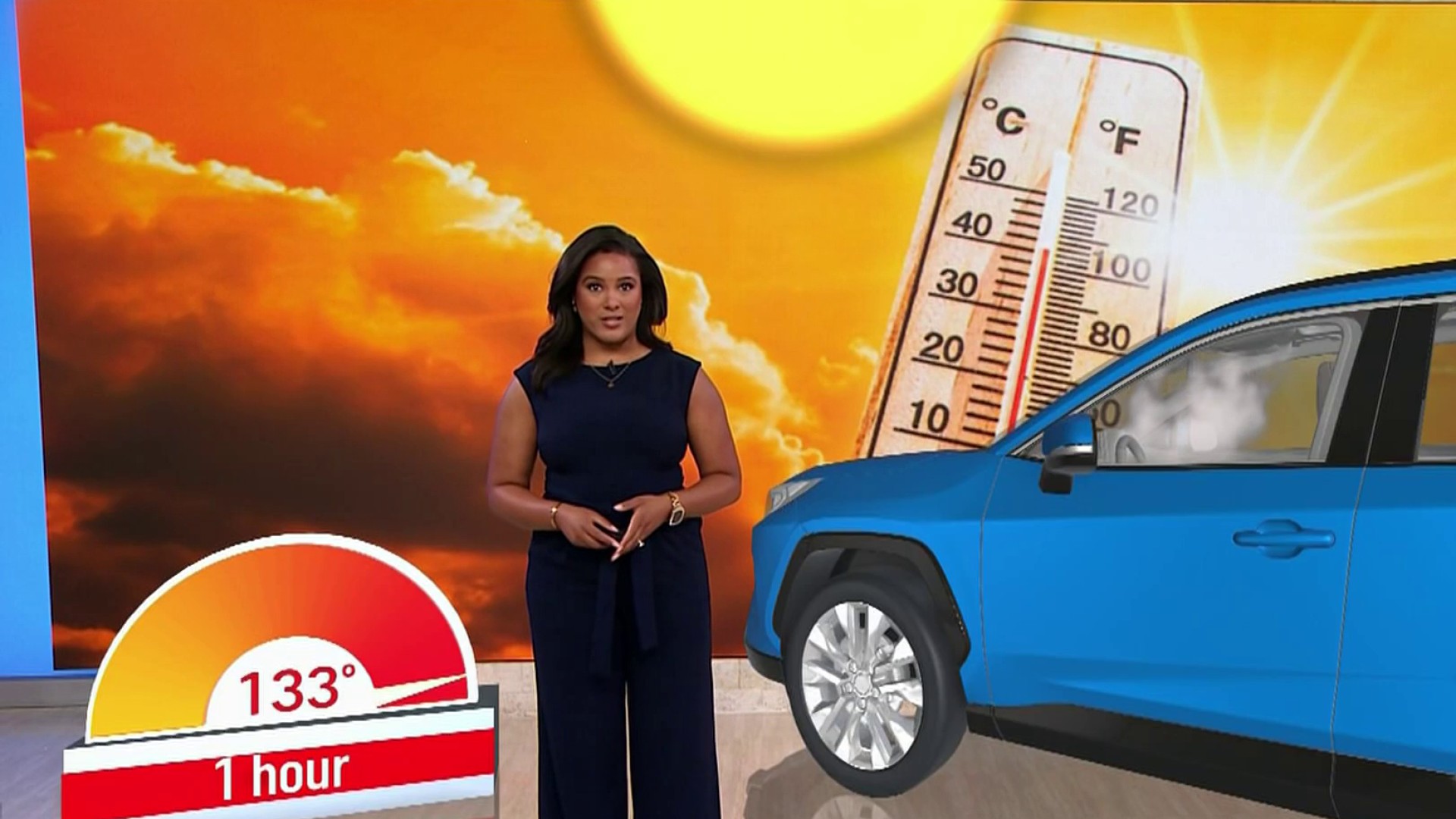A dangerous heat wave is set to grip the Washington, D.C., area for a week or more, with temperatures expected to rise above 95 degrees by the end of the week.
If the temperature hits 94 degrees or higher for seven days or more, this heat wave would become the hottest streak in the Washington Capitol Region since 2016.
The heat will turn up on Monday and is expected to climb through the work week and into the weekend. It will be sunny and humid with almost no chance for rain, according to Storm Team4.
With highs in the 90s, overnight lows are expected to get down in the 70s, providing minimal relief from the heat.
We've got the news you need to know to start your day. Sign up for the First & 4Most morning newsletter — delivered to your inbox daily. >Sign up here.
As the area braces for potentially record-breaking weather, here is what residents need to know.
How to stay cool and safe
Stay hydrated. Drink water, not alcohol or sugary beverages. Take shade breaks and stay in air conditioning as much as you can. Wear lightweight, breathable clothes that protect you from sun exposure.
In response to the heat wave, the District has activated a heat emergency and has opened up 128 cooling centers, including pools, spray parks and senior and recreation centers.
A map of cooling centers can be found here.
For those experiencing homelessness or know someone who is, free and accessible transportation to a cooling center is available by calling the shelter hotline at 202-399-7093 or 311.
If an animal has been left in the heat or trapped in a hot vehicle, the Humane Rescue Alliance can be called at 202-723-5730.
Signs of heat-related illnesses
In hot climates, heat-related illness is a serious risk with serious consequences. Knowing the signs and types of heat-related illnesses can make all the difference.
Heat cramps can sometimes be the first sign of a more serious heat-related illness, like heat exhaustion or heat stroke, according to the National Weather Service. Symptoms include painful cramps or spasms and can be treated by applying firm pressure to the muscle. As long as the person isn’t nauseous, they can also be given water.
If symptoms last for over an hour, worsen or the person vomits, seek medical attention.
Heat exhaustion is marked by a variety of symptoms:
- Heavy sweating
- Weakness or tiredness
- Cool, pale, clammy skin
- Fast, weak pulse
- Muscle cramps
- Dizziness
- Nausea or vomiting
- Headache
- Fainting
If these symptoms last for over an hour, get worse or vomiting occurs, seek immediate medical attention, the National Weather Service says.
Move the person to a cooler area, loosen their clothing, offer sips of water and apply cool, wet cloths or have them sit in a cool bath.
Heatstroke is always a medical emergency and can be fatal if not treated quickly. If heat stroke is suspected, call 911 or get the person to the hospital, said the National Weather Service.
In the meantime, try to reduce their body temperature using cool, wet cloths or a bath. A fan can also be used, but only if the heat index is below 90 degrees, otherwise it could do more harm than good.
The symptoms are not that different than those of heat stroke and can include:
- Headache
- Confusion
- Nausea
- Dizziness
- Body temperature above 103 degrees
- Hot, red, dry or damp skin
- Rapid and strong pulse
- Fainting or loss of consciousness.
In order to prevent heat-related illness, the Centers for Disease Control and Prevention suggests spending time in the air-conditioning — either at home or an air-conditioned public place, wearing loose-fitting clothing and taking cool showers and baths. Using the stove less often can also help make it cooler at home.
They also emphasized that outdoor activities should be scheduled with caution. They should be limited to when it’s coolest, such as in the morning and the evening, with opportunities to rest in the shade.
For the safety of both pets and their owners, pets should be kept inside. If walks are necessary, they should be done early in the morning with lots of water breaks.
Never leave children or pets alone in a vehicle
It’s also important to be aware of the danger posed by hot vehicles. Within 10 minutes, the temperature inside a car can get 19 degrees higher than it is outside, said Storm Team4 Meteorologist Jessica Faith. With temperatures in the 90s, it can be over 100 degrees inside a vehicle.
Cracking a window is not effective in alleviating the heat.
Staying in a hot car can be fatal, with victims often being children or pets.
In 2023, 29 children died of heatstroke in vehicles, according to the National Highway Traffic Safety Administration.
It only takes 15 minutes for an animal to suffer from heat-related illness or death in a vehicle.
Make sure car doors are locked and that keys are out of the reach of children so they aren’t able to get in by themselves. Always lock the doors after leaving the car and check the back seats.



